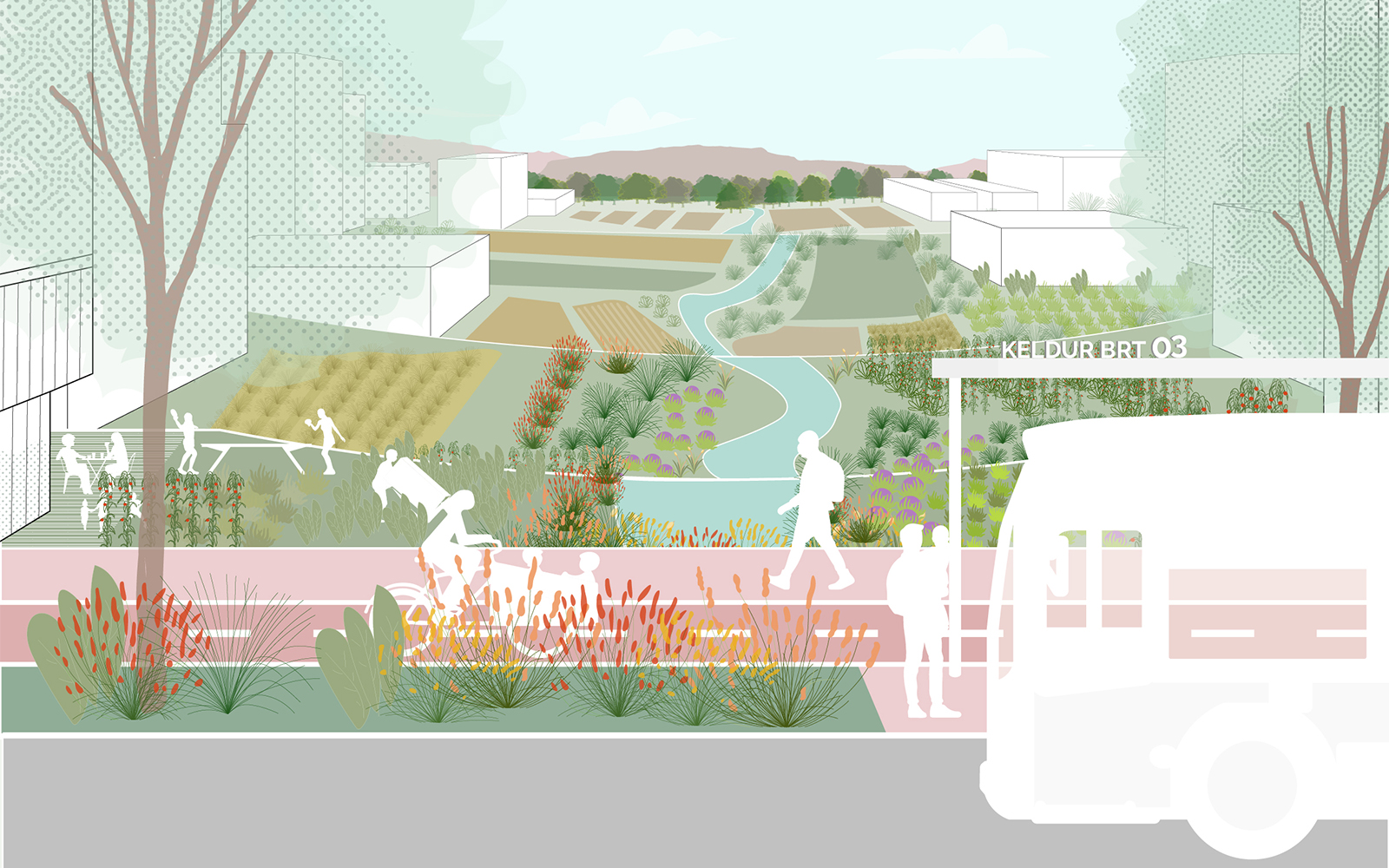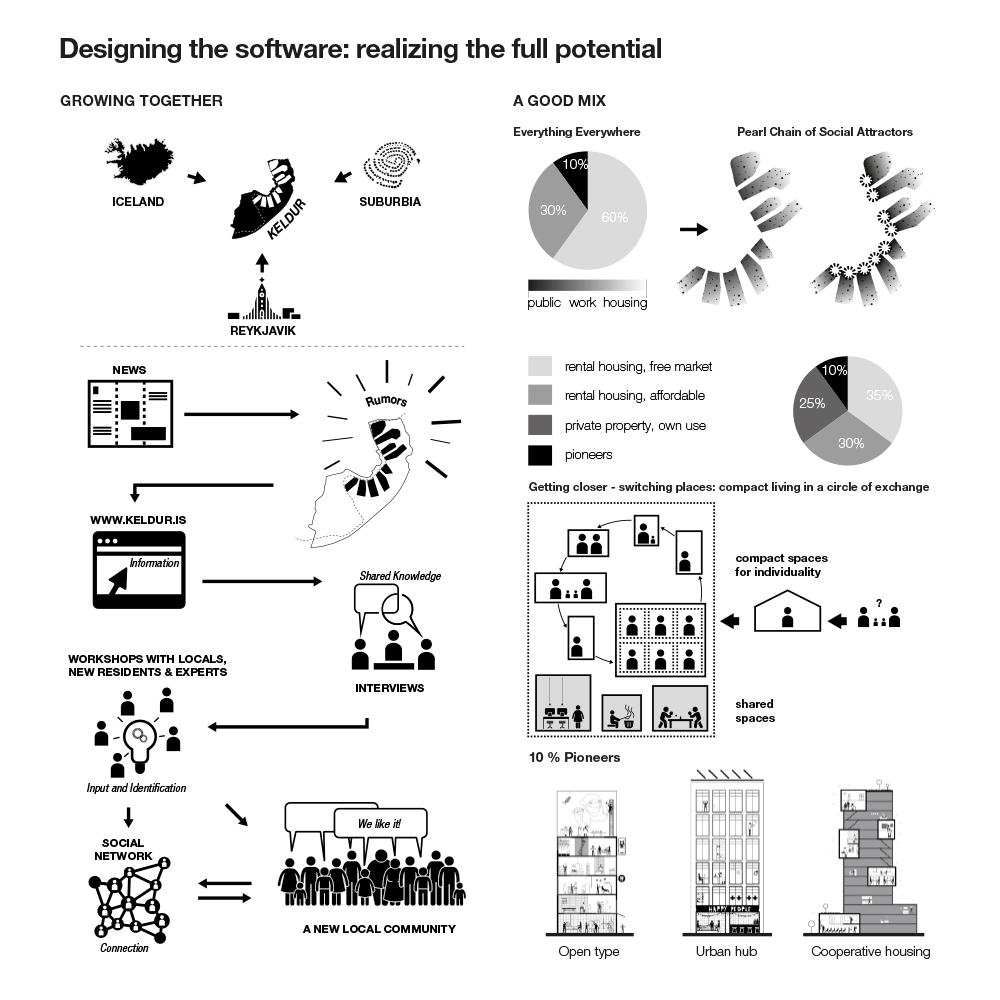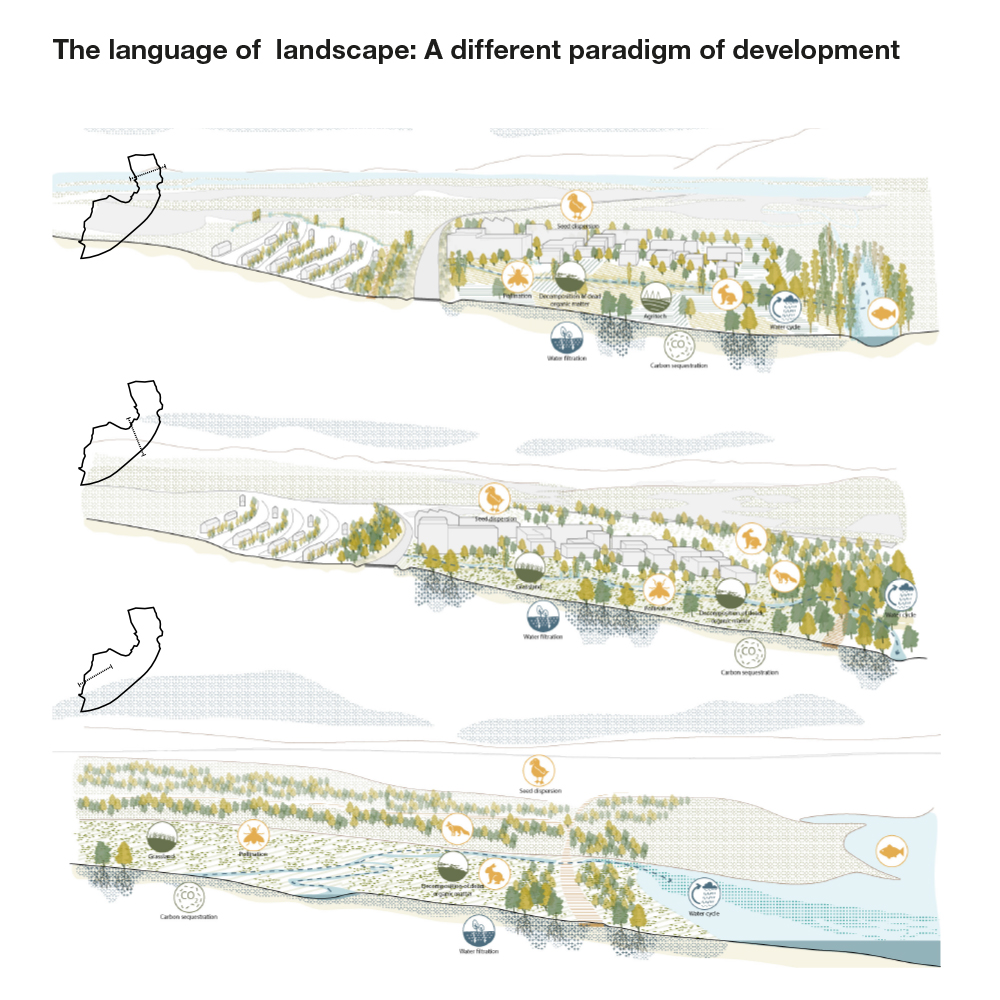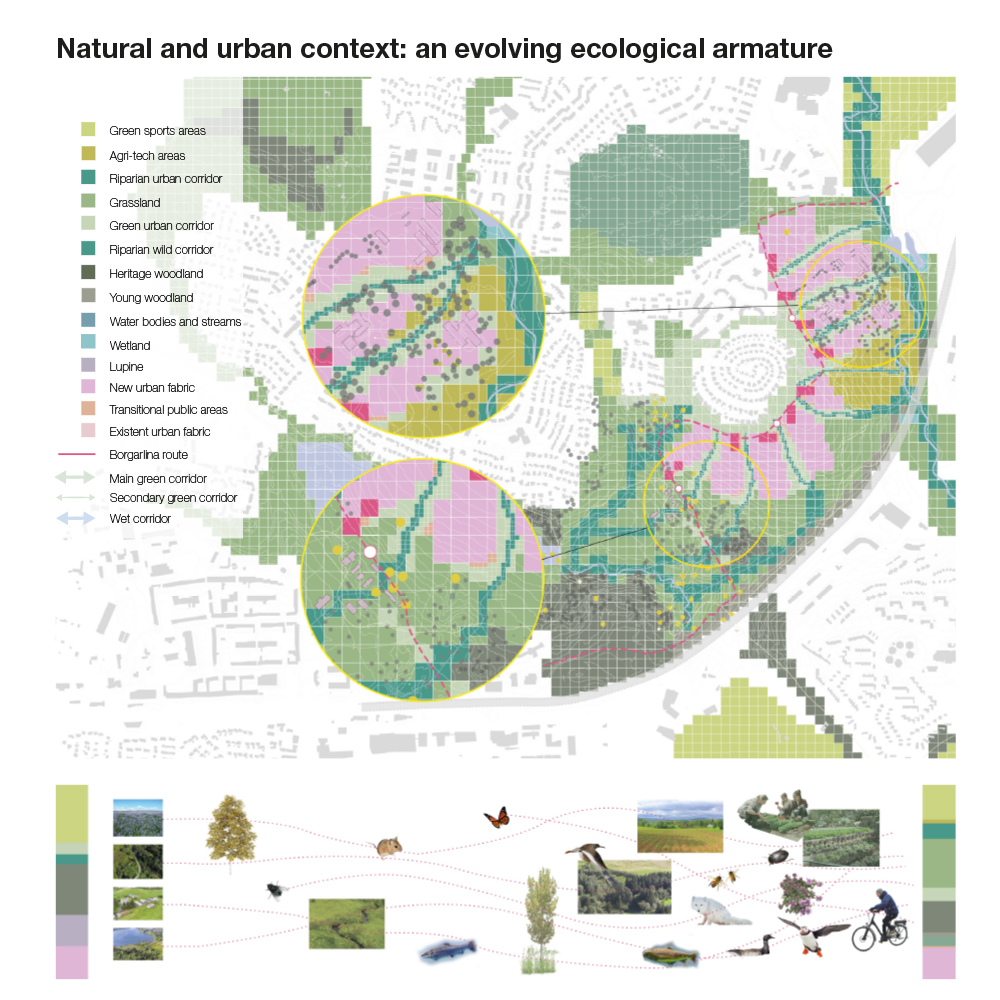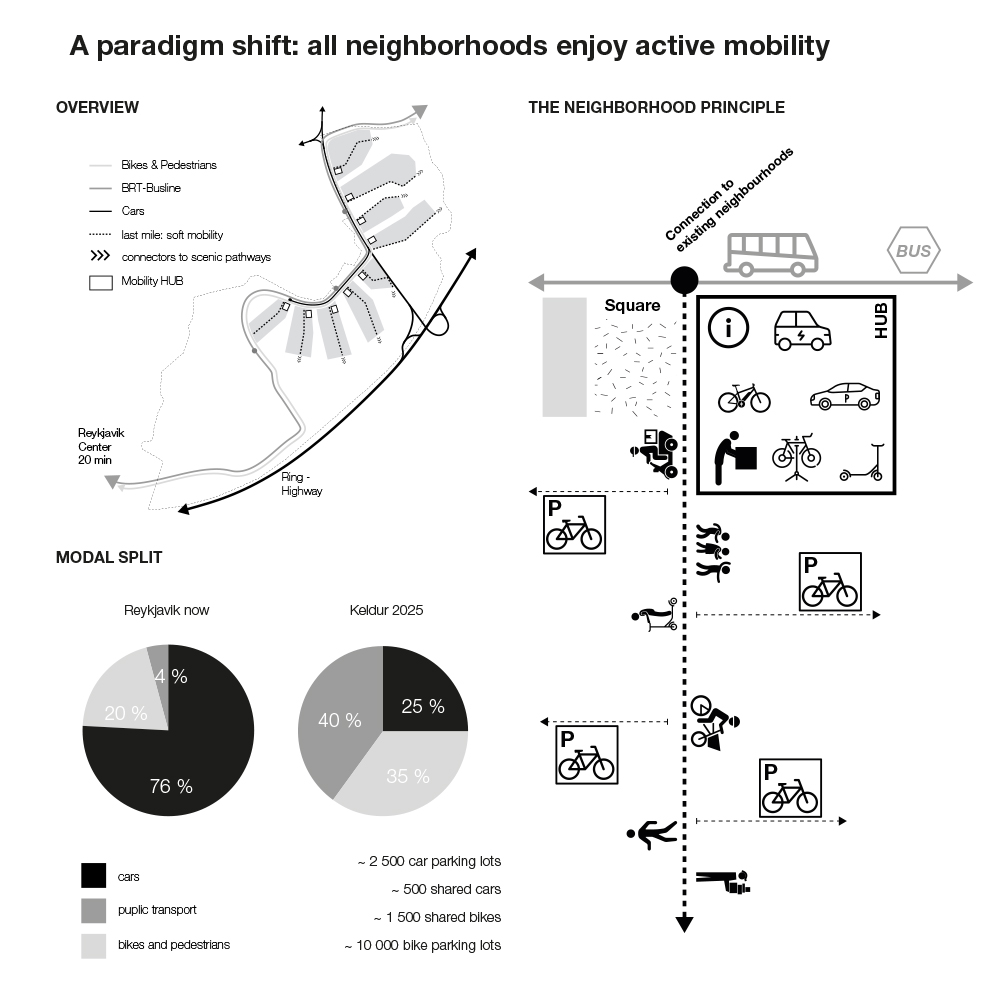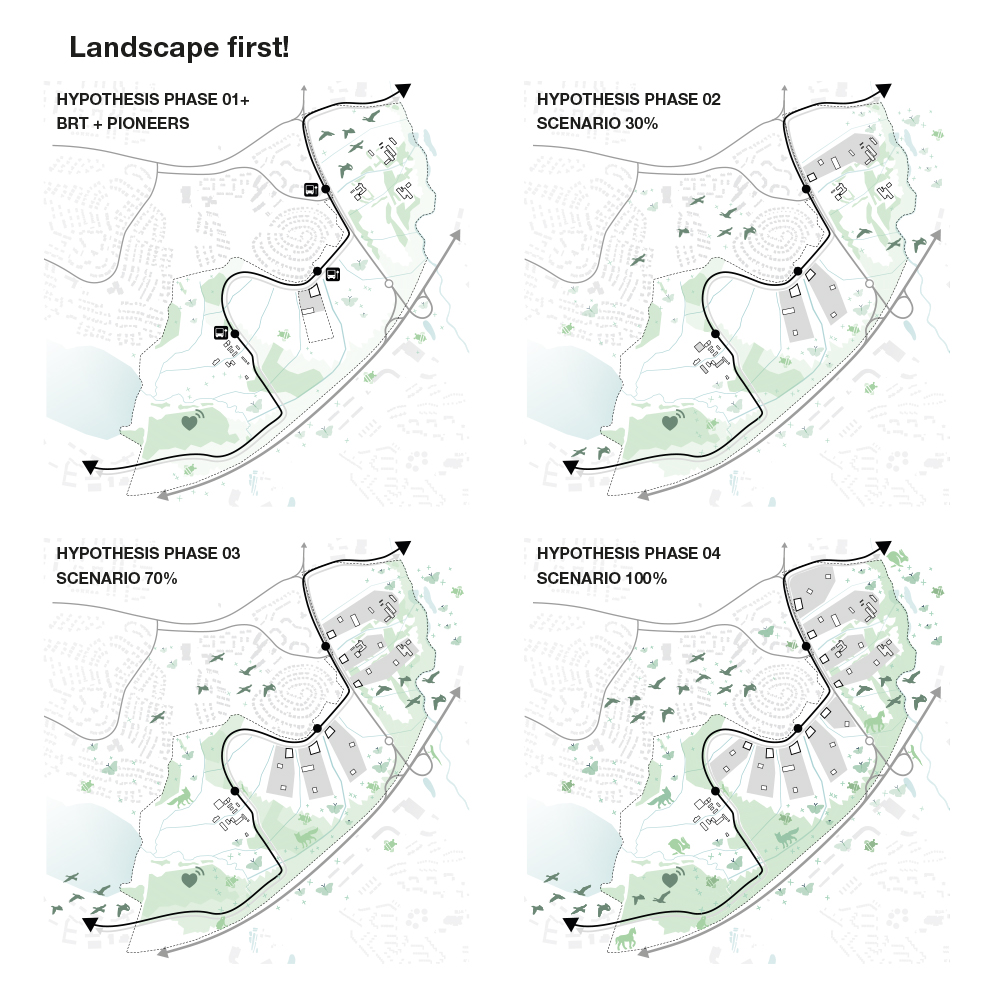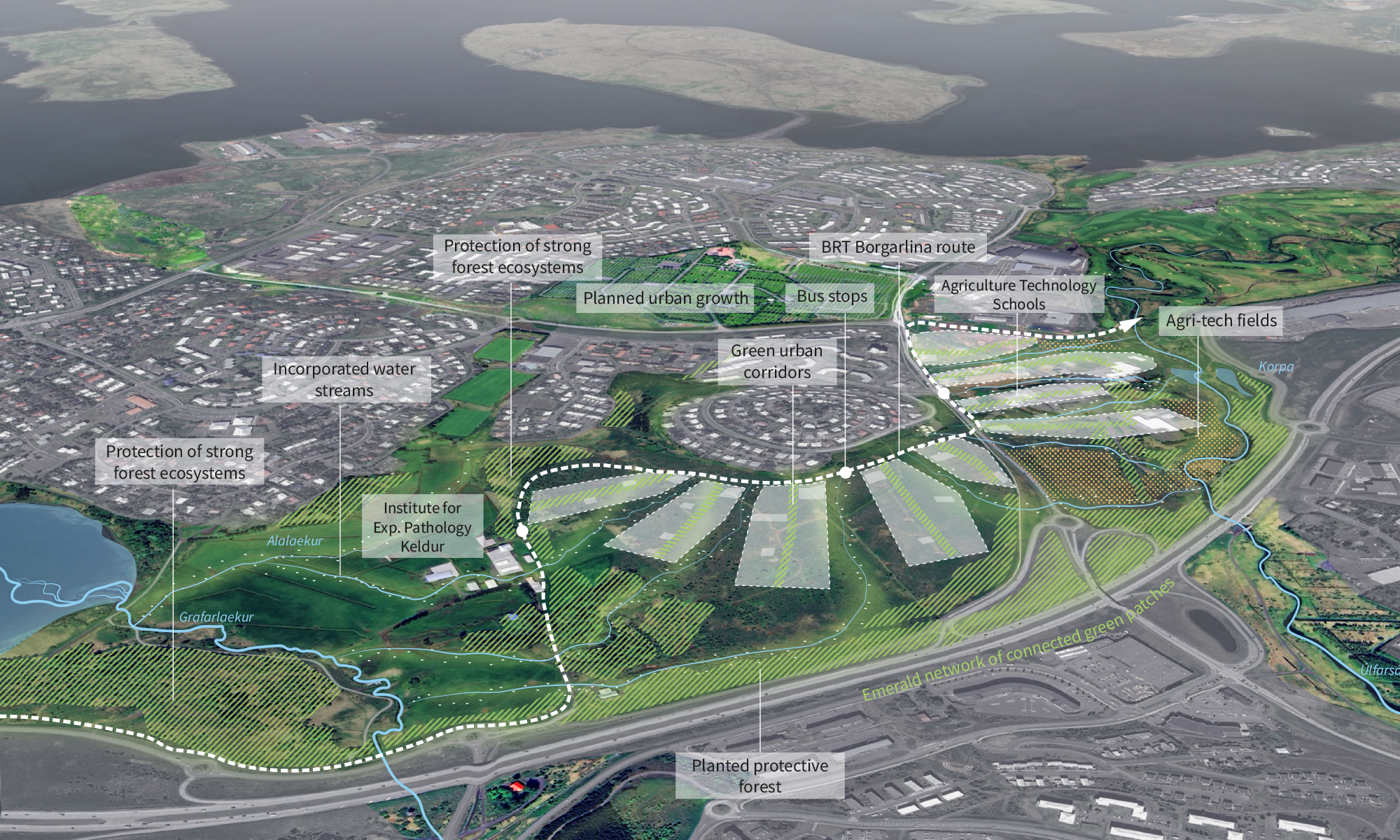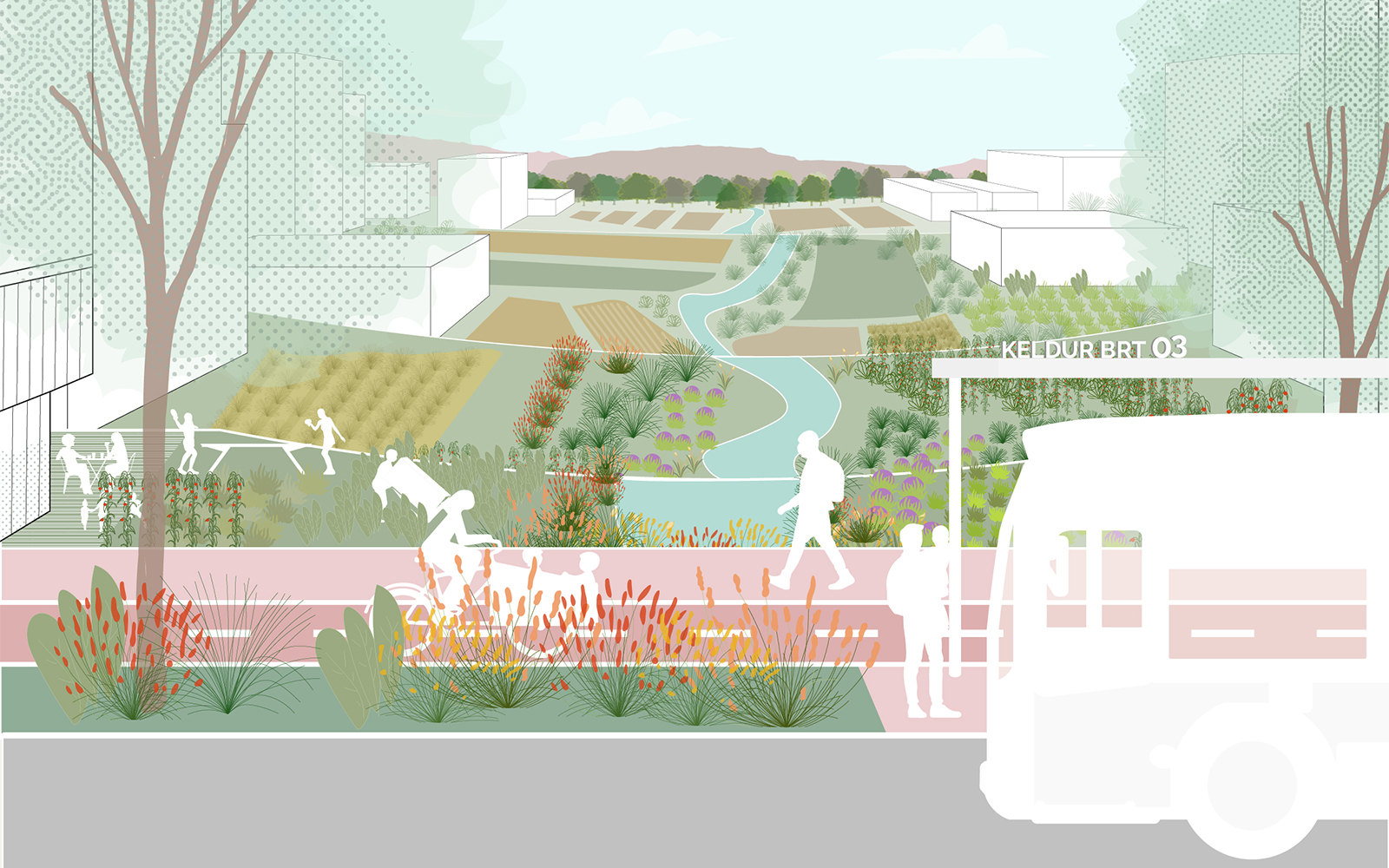
Keldur Development Area in Reykjavik, Iceland |
||
| Date: | 2023 | |
| Status: | International Competition | |
| Category: | Residential, Mixed-use, Masterplan, Landscape | |
| Tags: | Keldur – Masterplan – Reykjavik – Borgarlina BRT Mobility | |
Credits
Client: City of Reykjavik and Transport for the Capital Area (TfCA), Iceland
Location: Keldur Area in Grafarvogur, Reykjavik, Iceland
Program: Strategic Urban Development Plan of Keldur Area
Competition: International Competition
Site Area: 115 Ha
Total GF Area: +500.000 m2
Architecture & Urbanism: Gutiérrez-delaFuente Arquitectos + StudioVlayStreeruwitz
Landscape: LANDLAB Laboratorio de Paisajes
Mobility consultant: con.sens Verkehrsplanung
RECONSIDERING PREEXISTING PATCHINESS TO INCREASE KELDUR BIODIVERSITY
● A new mixed-use district along a BRT line: the new Keldur area will be an exciting urban quartier and the future home to 13,000 residents and 8,000 jobs, focused on eco-friendly transportation and land-use around three BRT transit stations. Keldur development area, at around 115 hectare richly endowed by nature while also presenting interesting challenges. The development area is part of a corridor of dense, mixed use urban core that runs the length of Reykjavík, from its old city center to the eastern edge. The Borgarlína BRT service is a major prerequisite for transforming Keldur into a mixed urban area with apartments, services, and commercial properties. The aim is to begin the BRT service at the same time as the first 100 apartments are delivered.
● Micro-neighborhoods for a new urban strategy: instead of 3 quartiers around the 3 bus stops, a pearl-chain of 9 micro-neighbourhoods with no more than 55.000 m2 GFA each is designed. Again, “productive fragmentation” triggers new opportunities. The downsized scale flips between micro-neigh¬borhood and architectural ensemble, giving both an equally high level of care. The poly-centric human-scaled ecosystem is anchored to the different landscape conditions through these micro-neighbour¬hoods. The surrounding forests, agriculture lands, water bod¬ies, marshlands are the basis of these settlements, connect¬ing the large scale characteristics with the proximity scale. The new Keldur development combines an urban grain with a village community life to define a new kind of urbanism. The collection of 9 developments accommodates a variety of building types for living and working, coming together regard¬less of income or life stage.
● A responsive framework for bio-diversification: landscapes are highly heterogeneous mosaics of many habitat types and uses that can be understood through the patch-cor¬ridor-matrix model. Spatial variation in landscape ecology, also called “habitat patchiness”, denotes a particular spatial process of land conversion. In the strict sense of the word, fragmentation refers to breaking a whole into smaller pieces while controlling the amount of changes to avoid habitat loss. In addition, it is possible to design the size, morphology and type of fragments to multiply the symbiotic relationships between the different habitats, merging the natural and the urban. In this way, Keldur will contribute to the development of more complex and resilient ecosystems over time. Lifescape proposes a growth emergence from past conditions towards a new and unique future!
